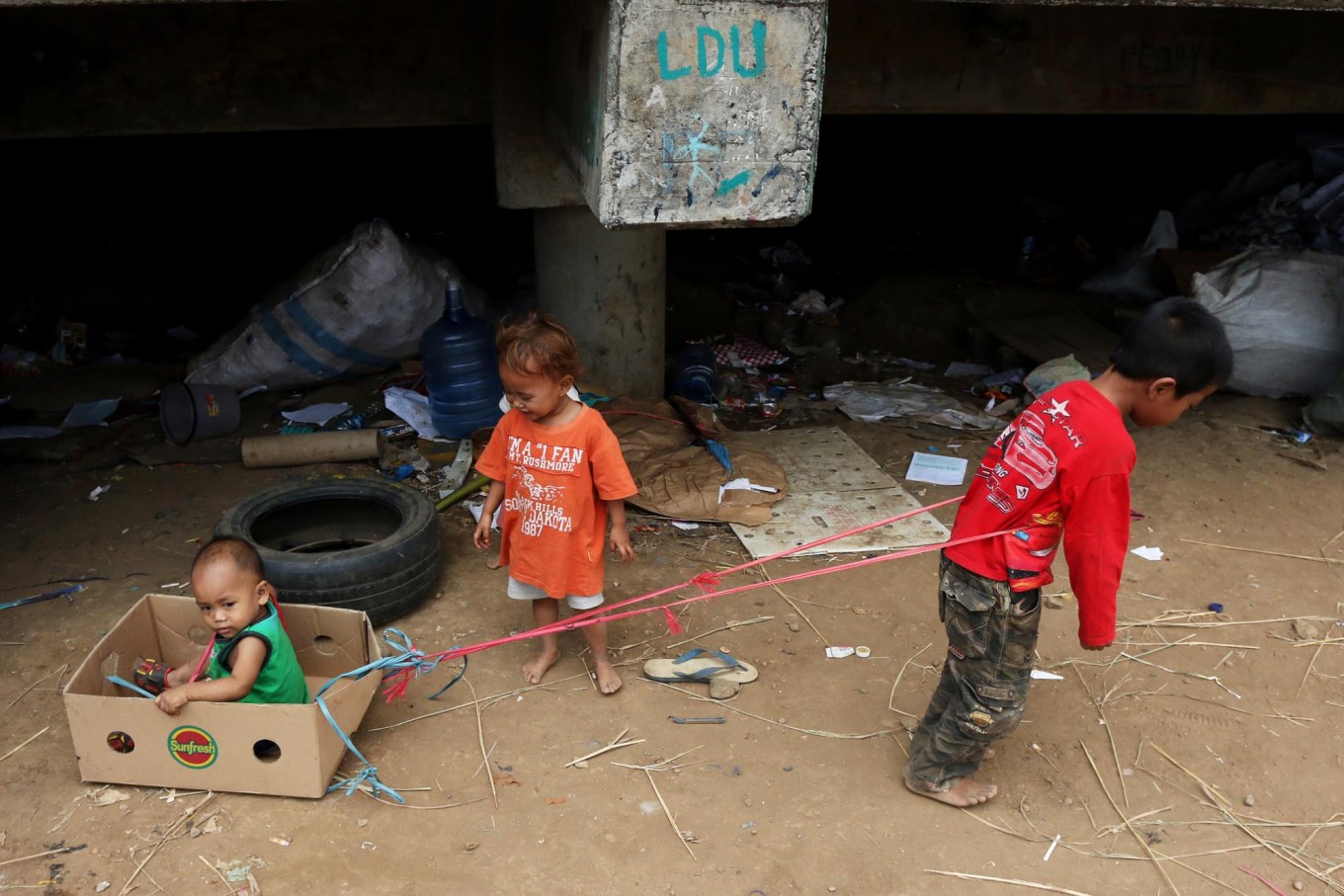Popular Reads
Top Results
Can't find what you're looking for?
View all search resultsPopular Reads
Top Results
Can't find what you're looking for?
View all search resultsPoverty rate falls but disparity remains high
As of March, the poverty rate was recorded at 6.69 percent in urban areas and at 12.85 percent in rural areas.
Change text size
Gift Premium Articles
to Anyone
S
tatistics Indonesia (BPS) reported on Monday that the disparity of poverty levels between urban and rural areas remained very high as the national poverty rate decreased to 9.41 percent as of March.
BPS head Suhariyanto said BPS recorded Indonesia’s poverty rate at 9.41 percent as of March, down by a 0.25 percentage point from 9.66 as of last September or down by a 0.41 percentage point from 9.82 percent as of March 2018.
“However, it’s important to note that the poverty disparity between urban and rural areas remained very high with the rate in rural areas almost two times of the rate in urban areas,” he said in a press conference.
As of March, the poverty rate was recorded at 6.69 percent in urban areas and at 12.85 percent in rural areas.
The poverty disparity among provinces in the country also remained very high, Suhariyanto said. Jakarta, for example, recorded the lowest rate, 3.47 percent, and Papua the highest, 27.53 percent, far above the national average of 9.41 percent, he said.
Suhariyanto said that currently the number of poor people in Indonesia was 25.41 million, a decrease of 800,000 from March last year.
He said the decrease in the poverty rate was thanks to overall increases in farmers’ wages, to the low inflation rate of 1.52 percent from September 2018 to March 2019 and to the decrease in prices of staple foods like poultry, vegetable oil, sugar and chilies.
He also said the increase in the government’s social assistance was a significant factor in pushing down the poverty rate. “The government had expanded the scope of the non-cash food assistance program [BPNT] from 158 to 219 regencies in the first quarter of 2019.” he said.“The State Logistics Agency [Bulog] also distributed rice assistance [Rastra] on schedule from January to March 2019.”
Under the Rastra introduced in 2015, the government distributed 10 kilograms of rice to each of 14 million poor families every month. Meanwhile, under the BPNT scheme, the government distributed Rp 110,000 (US$8) monthly to each of 15.6 million poor families in the form of e-money, with which they were allowed to buy eggs and rice at designated kiosks called e-warung.
In line with the reduced poverty rate, the spending gap represented by the Gini ratio decreased by 0.007 points to 0.382 as of March from the same month of 2018, according to Suhariyanto.
The Gini ratio is a measure of inequality in which zero represents complete equality and one represents complete inequality.(nal)










